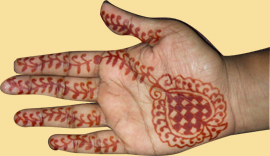Metric conversions: step to the right, step to the left
First, the basics. One metre (which is oddly enough just about the same size as a metre stick) can be divided into 1000 parts called millimetres.
 So, if I want to convert a measurement in millimetres to metres, I can do it by moving the decimal point 3 places to the left:
So, if I want to convert a measurement in millimetres to metres, I can do it by moving the decimal point 3 places to the left:
277 mm -> 0.277 m
Likewise, if I want to convert a measurement in metres to millimetres, I can do it by moving the decimal point 3 places to the right:
0.341 m -> 341 mm
If you don't have any decimal places to move to the right, then you need to add zeros:
345 m ->345000 mm
34.5 m ->34500 mm
A lot of people remember the part about moving the decimal point over by 3, but don’t remember whether it goes to the left or the right. There’s an easy solution for this: make sure your answer makes sense! Millimetres are pretty small. It’s going to take MORE millimetres than metres to make the same measurement.
A few big units = Lots of small units
 If you convert the length of your finger (70 millimetres) into 70,000 metres, stop and think a moment. 70,000 metres is pretty ridiculous.
If you convert the length of your finger (70 millimetres) into 70,000 metres, stop and think a moment. 70,000 metres is pretty ridiculous.
If you divide a millimetre into 1000 pieces, you get a micrometre, abbreviated µm, or um (being easier to type on a standard keyboard).
And if you divide a um into 1000 pieces, you get a nanometre, or nm.
So altogether now:
- 1 metre is 1000 millimetres
- 1 millimetre is 1000 micrometres (or microns, or µm, or um)
- 1 micrometre is 1000 nanometres (or nm)
Copyright University of Maryland, 2007
You may link to this site for educational purposes.
Please do not copy without permission
requests/questions/feedback email: mathbench@umd.edu